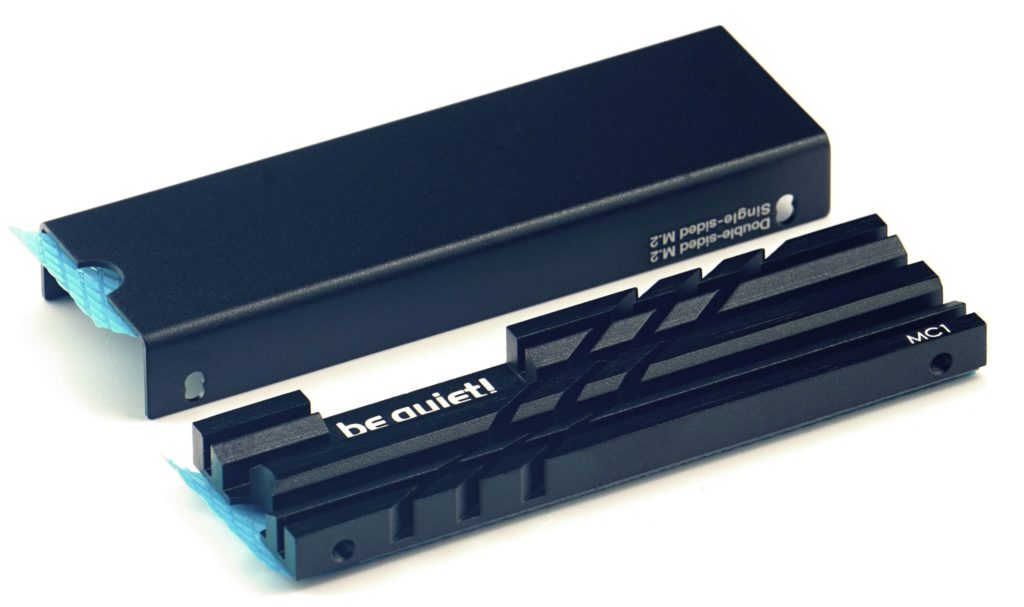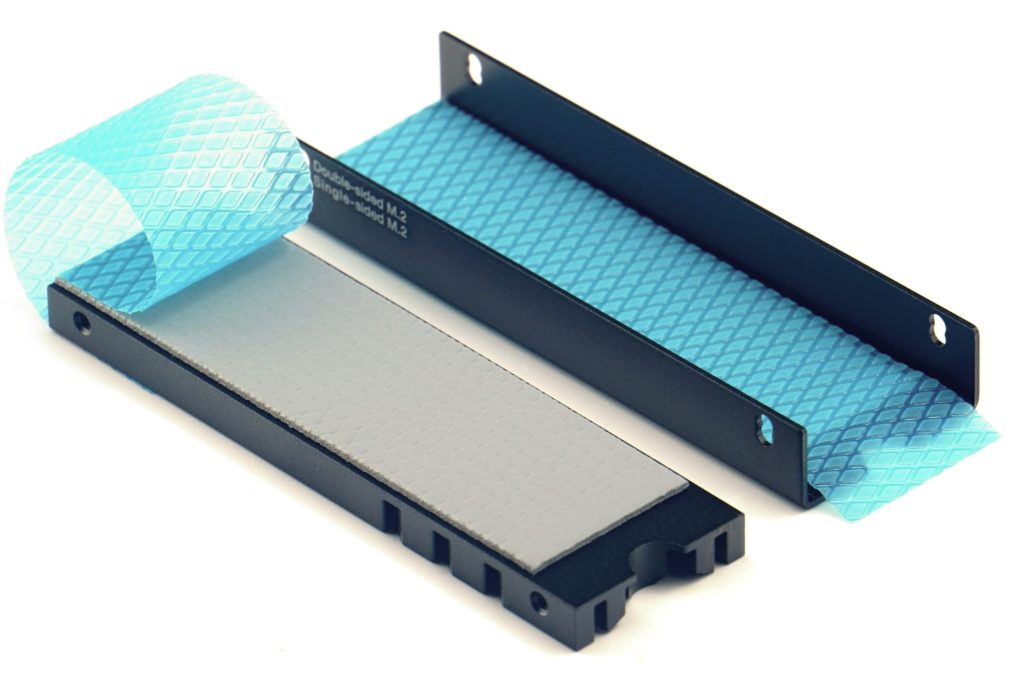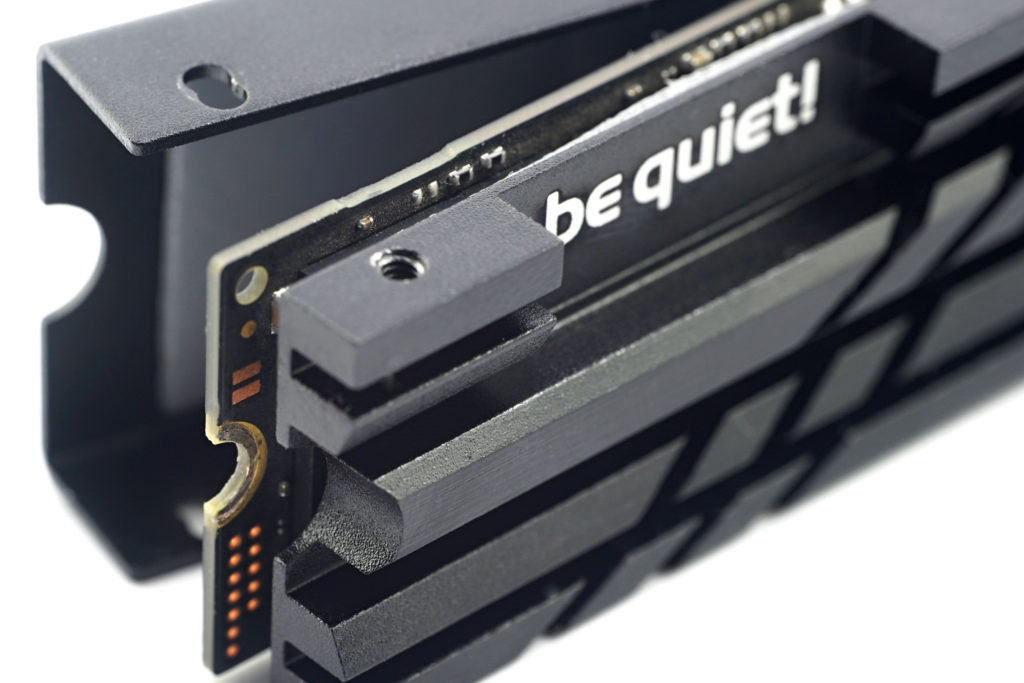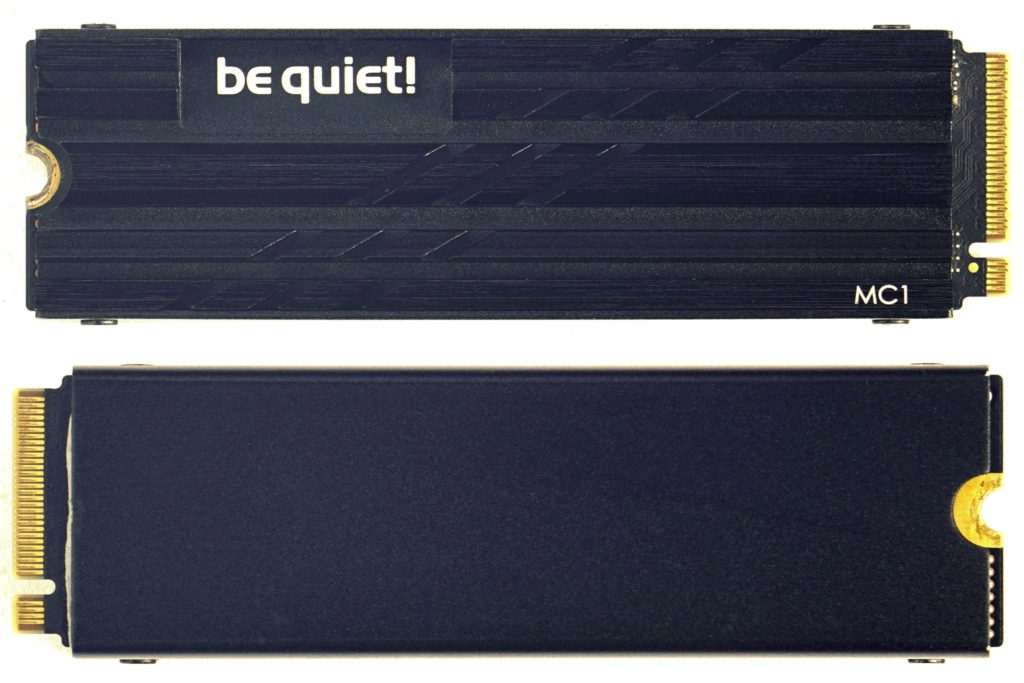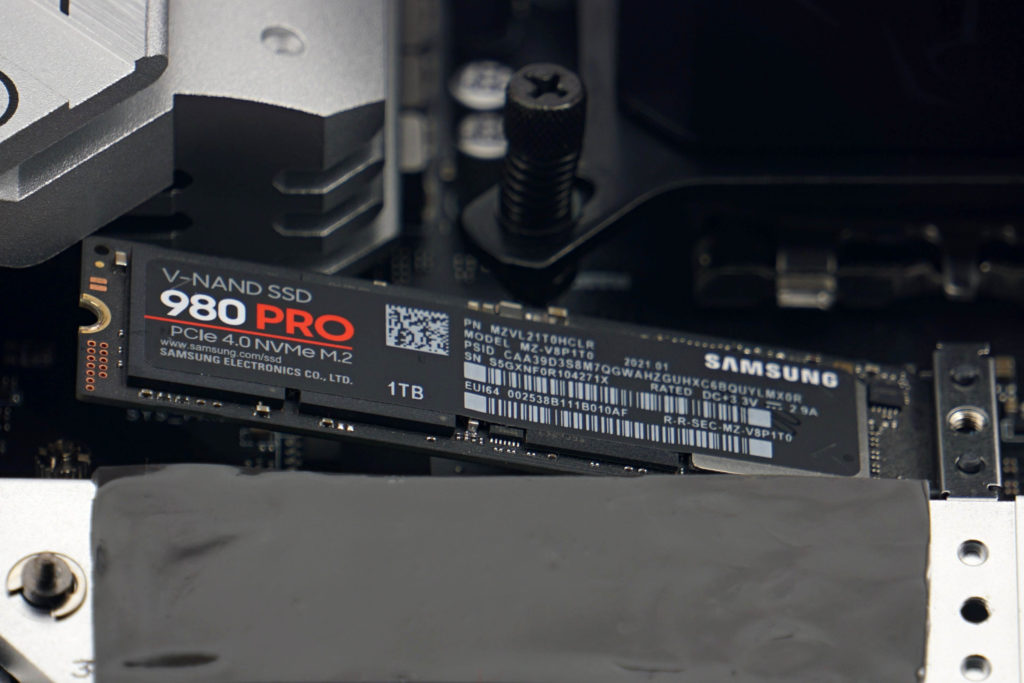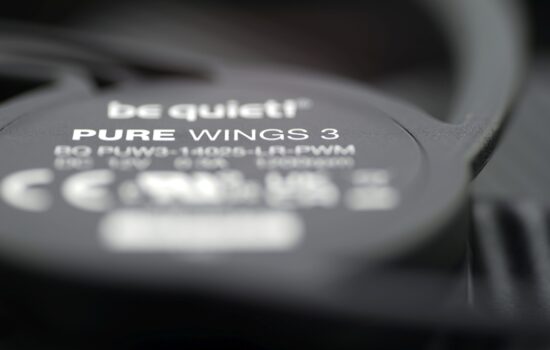BeQuiet! MC1 cooler in detail
The coexistence of third-party SSD coolers that are sold separately with the ones you get in the price of the motherboard invites closer examination. Which of these solutions makes more sense and when? We’ll start answering that question starting now, beginning with an analysis of the BeQuiet MC1 cooler, which will be the first to be confronted with a whole host of motherboard SSD coolers.
BeQuiet! MC1 cooler in detail
BeQuiet! MC1 consists of two aluminum profiles that fit together (and hold the SSD between them). The main, finned front section weighs 16 grams. That’s less than most heatsinks that ship with motherboards. In some cases, many times less. So the M1 won’t beat such (heaviest) coolers in cooling performance, but the design of the BeQuiet! is often structurally more elegant.
While significantly heavier motherboard coolers use “brute force” (lots of material), the MC1 was efficiency-conscious in the sense of wringing as much as possible out of the aluminium used. In other words, less material is used, but it is processed in such a way that the best possible results are achieved when dissipating heat through the airflow (of the system fans). Unlike many other designs, the surface here is quite articulated, although it could certainly be more, with even more surface area.
The second part, the tray/trough shaped backplate, is also in contact with the SSD from underneath. Like the front, it’s through a one-millimeter-thick thermally conductive pad. This is quite soft and due to the pressure of the SSD, it adapts well to different heights when mounted and also compensates well for the height differences of the individual chips (typically between the controller and the memory).
Mounting the cooler to the SSD is easy, but there are a few things to watch out for. The mounting system itself involves inserting the SSD between aluminum profiles, which you securely connect by screwing in from the sides, at four points. BeQuiet! also has different mounting holes here depending on whether you have a single-sided or double-sided SSD. For single-sided, you naturally use the holes that hold the individual (cooler) pieces closer together and exert more pressure on the SSD.
However, it should be noted that the implementation of this system has some limitations. The mounting holes are partially overlapping. There is some narrowing at this point, but this corresponds approximately to the width of the screw threads. In practice, this means that after insertion, the screw easily “floats” from one position to another position (for double-sided SSDs).
To maintain the desired position, typically for single-sided SSDs, the profiles need to be pressed together properly and the screws need to be pulled with more force. Then they are not held in the selected position by the thread, but by the force of the header. However, due to the small threads (M2) and headers, this is definitely not an optimal solution. Tightening more aggressively could easily shear the threads or damage the mounting head. For mounting, by the way, BeQuiet! also supplies a small screwdriver as an accessory.
Once complete, the SSD with the cooler gives a very robust impression and you can’t easily wiggle it around. This is also good considering that the spacers of the M.2 slots on motherboards are not always at the height of the contacts on the other side. Thus, SSDs tend to be either a bit “pulled” or “pushed” on one side, in short, they may not keep a perfect plane even after proper screwing. This can lead to some deformation and poor contact with the cooler, which in some places (without contact, with an air gap) can in turn act as a thermal insulator, impairing air circulation around the SSD. Due to the robust construction, not only of the front heatsink but also of the backplate, this does not concern SSDs with the MC1 cooler.
It’s worth adding that the cooler is low-profile, it protrudes the SSD by only 5mm. It won’t interfere with the PCI Express expansion cards you’d like to install above it.
Methodology
The tests take place in a wind tunnel that replaces a standard computer case. Four Noctua NF-S12A PWM@550 rpm fans are used for system cooling in a balanced ratio of two intake to two exhaust fans. The intake air temperature is strictly controlled and is kept within a narrow range of 21–21.3 °C for maximum accuracy.
In line with findings from measurements of the impact of different positions on cooling efficiency, we test separate SSD coolers in the first slot, above the graphics card. From board tests we naturally have a lot of results of coolers (referred to as cooler 1 and cooler 2) from other positions as well, but there it is due to their fixed position.
For testing, we use the Samsung 980 Pro (1 TB) SSD. The load is run for 10 minutes (which is enough time in the wind tunnel for temperatures to stabilize) in CrystalDiskMark – sequential read and write cycles. The achieved power draw then is about 6 W, which is the upper limit of what M.2 SSDs achieve and shouldn’t change even models with PCIe 5.0 interface support.






